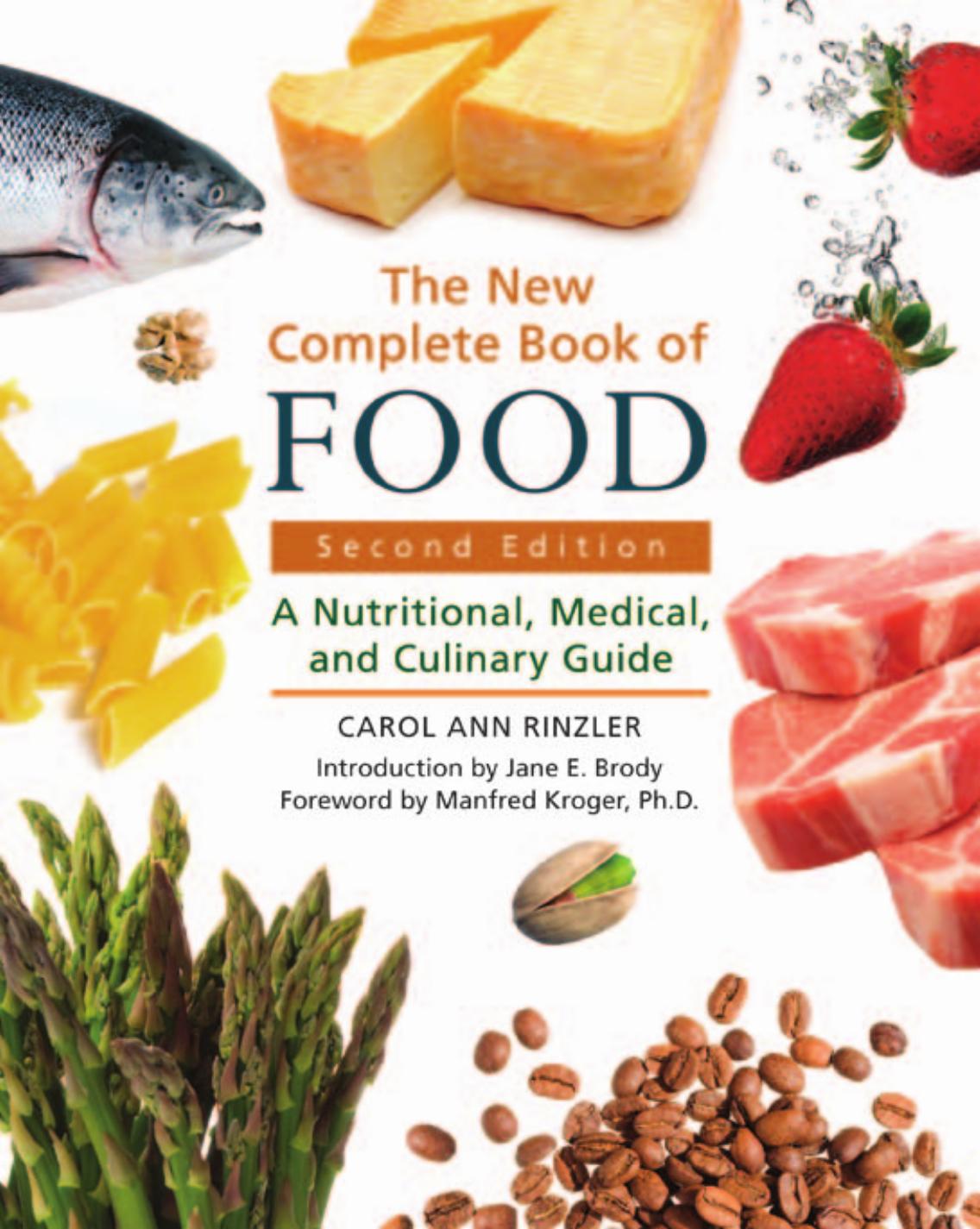The New Complete Book of Food by Carol Ann Rinzler

Author:Carol Ann Rinzler [Rinzler, Carol Ann]
Language: eng
Format: epub, pdf
Publisher: IB Dave's Library
Published: 2010-05-10T07:00:00+00:00
The New Complete Book of Food
with galactosemia will fail to thrive and may develop brain damage or cataracts if they are given milk. To prevent this, they are kept on a milk-free diet for several years, until their bodies have developed alternative ways by which to metabolize galactose. Pregnant women who are known carriers of galactosemia may be advised to avoid milk while pregnant, lest the unmetabolized galactose in their bodies damage the fetus. Genetic counseling is available to identify galactosemia carriers. Allergic reaction. According to the Merck Manual, milk is one of the 12 foods most likely to trigger classic food allergy symptoms: hives, swelling of the lips and eyes, and upset stomach. The others are berries (blackberries, blueberries, raspberries, strawberries), chocolate, corn, eggs, fish, legumes (green peas, lima beans, peanuts, soybeans), nuts, peaches, pork, shellfish, and wheat (see wheat cereals).
Food poisoning. Raw (unpasteurized) milk may be contaminated with Salmonella and/or Listeria organisms. Poisoning with Salmonella organisms may cause nausea, vomiting, and diarrhea—which can be debilitating and potentially serious in infants, the elderly, and people who are ill. Listeria poisoning is a flulike illness that may be particularly hazardous for pregnant women or invalids who are at risk of encephalitis, meningitis, or infections of the bloodstream. Listeria may also be found in milk foods made from infected raw milk. Salmonella will also grow in pasteurized milk if the milk is not refrigerated. Food/Drug Interactions
Tetracyclines. The calcium ions in milk bind to tetracyclines, such as Declomycin, Minocin, Rondomycin, Terramycin, and Vibramycin, forming insoluble compounds your body cannot absorb. Taking tetracyclines with milk makes them less effective. Antacids containing calcium carbonate. People who take calcium carbonate antacids with homogenized milk fortified with vitamin D (which facilitates the absorption of calcium) may end up with milk-alkali syndrome, a potentially serious kidney disorder caused by the accumulation of excessive amounts of calcium in the blood. Milk-alkali syndrome, which is rare, subsides gradually when the patient stops taking either the antacid or the milk. r
Mushrooms
o
Nutritional Profile
3
Energy value (calories per serving): Low
Protein: High
Fat: Low
]
Saturated fat: Low
Cholesterol: None
Carbohydrates: High
Fiber: High
1
Sodium: Low
Major vitamin contribution: B vitamins, folate
Major mineral contribution: Potassium
[
About the Nutrients in This Food
Mushrooms are high in dietary fiber, both insoluble cellulose in the outer skin and pectins in the flesh. They have traces of protein and small 8
amounts of the B vitamin folate.
One-half cup cooked fresh mushrooms has 2 g dietary fiber, 2 g protein, and 14 mcg folate (4 percent of the RDA).
/
The Most Nutritious Way to Serve This Food
Fresh, in salads.
w
Diets That May Restrict or Exclude This Food
* * *
^
Buying This Food
Look for: Smooth, plump, uniformly cream-colored button mushrooms.
?
The cap should be closed tightly, hiding the gills. As mushrooms age, they turn darker; they also lose moisture and shrink, which is why the caps spring open, revealing the pink or tan gills. (Black gills are also an indication of age.) Older mushrooms are more intensely flavored than young ones, but
Download
The New Complete Book of Food by Carol Ann Rinzler.pdf
This site does not store any files on its server. We only index and link to content provided by other sites. Please contact the content providers to delete copyright contents if any and email us, we'll remove relevant links or contents immediately.
Nutrition for Sport, Exercise, and Health by Spano Marie & Kruskall Laura & Thomas D. Travis(3666)
Nutrition for Sport, Exercise, and Health by Marie Spano & Laura Kruskall & D. Travis Thomas(3644)
The Sprouting Book by Ann Wigmore(3510)
Flavor Flours by Alice Medrich(2728)
Superfood Smoothie Bowls: Delicious, Satisfying, Protein-Packed Blends that Boost Energy and Burn Fat by Chace Daniella(2349)
Memory Rescue by Daniel G. Amen(2344)
Dirty Genes by Ben Lynch(2231)
The Bad Food Bible by Aaron Carroll(2184)
The Poisoner's Handbook by Deborah Blum(2063)
Genius Foods by Max Lugavere(2037)
Good Calories, Bad Calories by Gary Taubes(2019)
The Main Street Vegan Academy Cookbook by Victoria Moran(2010)
The I Quit Sugar Cookbook by Sarah Wilson(1947)
Core Performance Essentials by Mark Verstegen(1926)
Memory Rescue: Supercharge Your Brain, Reverse Memory Loss, and Remember What Matters Most by Amen Dr. Daniel G(1920)
Big Girls Do It Stronger by Jasinda Wilder(1867)
Android App Development by Franceschi Hervé J.;(1797)
Sugar Crush by Dr. Richard Jacoby(1747)
Dr. Colbert's Keto Zone Diet by Don Colbert(1601)
